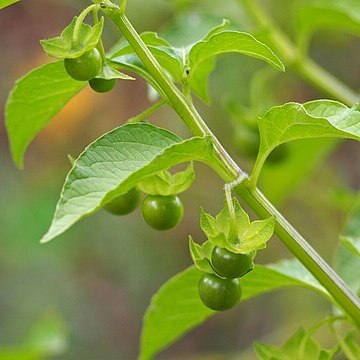Herb to 2 m tall; stems fistulose, green, glabrate to viscid pubescent with straight hairs which dry white. Leaves ovate, entire or sparingly sinuate-dentate, apically acuminate, basally obtuse or narrowed, above glabrate, beneath sparingly pubescent along the veins, the petioles to ca. 5 cm long, often winged by the narrowed leaf base; minor leaves often present and as large as the majors. In-florescence an umbel on a slender, puberulent, unbranched peduncle, to 4 cm long, pedicels filiform, 1 cm long, to 3 cm long in fruit. Flowers mostly de-fleeted, calyx 2-3 mm long, lobed about halfway down, accrescent and becoming 1 cm long in fruit, with a conspicuous midvein, spreading and not enveloping the fruit; corolla yellow to greenish white, often with some greenish dots, 10-15 mm across, lobed about halfway, the lobes deltoid or obtuse; anthers ellipsoid, ca. 2 mm long; style expanded-capitate. Fruit a black mucilagineous berry, 8-10 mm across. Seeds many, compressed lenticular, ca. 1 mm long. Chromosomes n = 12.
More
An annual herb. It grows 30-120 cm tall. It is spreading or trailing. From a single root it forms several shoots. The leaves are broadly sword shaped and 20 cm long. They are dark green. The flowers are disk shaped and pale yellow to green with dark green spots towards the centre. The fruit are about 1-2 cm across. They are dark purple and round. The have a scent resembling grapes.
The leaves are eaten raw. They are also used as a potherb or cooked with eggs. The fruit are eaten raw, cooked or dried. They can be used for jam. The roots are eaten raw, boiled, broiled (grilling) or with radishes.

